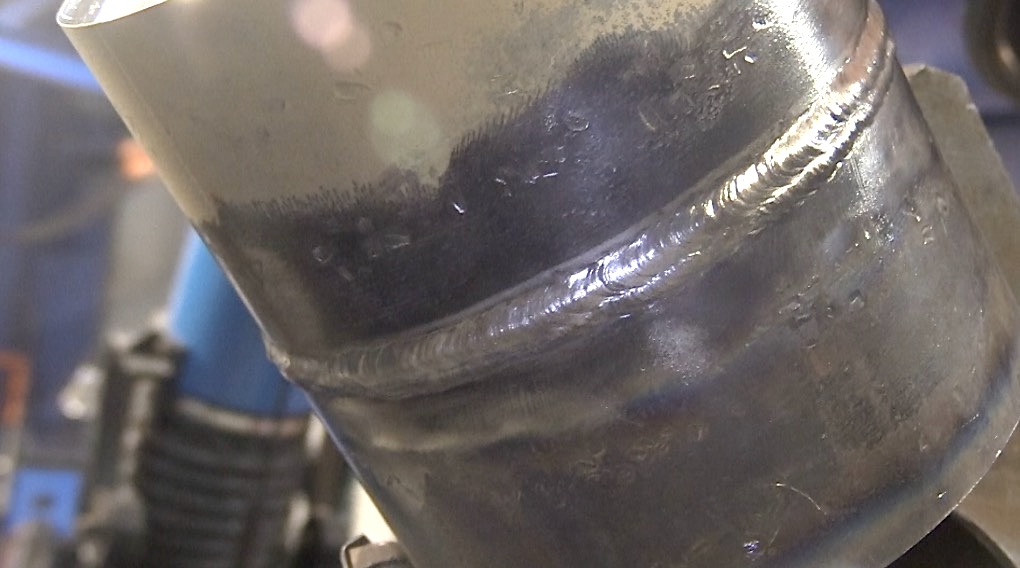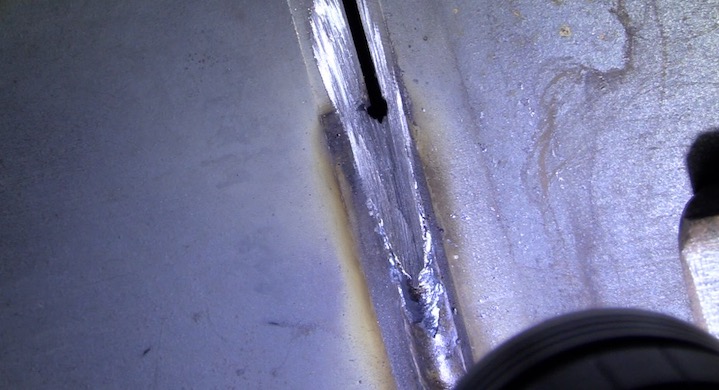6G Pipe Welding test 6010 Root with 7018 fill and cap
See the 6g 6010 Root pass video here
This video is about welding a 6g pipe welding test on 6” Schedule 80.
Details:
Esab REBEL 285
6010 1/8” uphill root 85-90 amps
7018 1/8” fill and cap 105 amps for fill pass, 115 for 2 bead cap.
30 degree bevel angle
3/32” gap
3/32” land
What is a 6G Pipe Welding Test?

A 6g pipe welding test is where the pipe is welded with the axis of the pipe at 45%…in a fixed position.
When I say fixed position, that means that once welding begins, the pipe cannot be rolled or moved.
In
fact, often times, the weld test supervisor will make a unique mark on
the pipe and sometimes even the fixture holding the pipe to ensure the
pipe was not move during welding.
Test requirements vary from job
to job but in my experience, there were tests were I could use a
grinder within reason, but there were also tests where only a file was
permitted….Best practice is to be prepared to not use a grinder.
If you have practiced the test and know how to feather tack welds using only a file, you will be confident either way.
And
if using a grinder is permitted, and there is a time limit on the test
(often there is a time limit) then definitely use the grinder to save
time
But be careful not to put grinding marks outside the
bevel…you might get away with some slight marks, but you never know how
picky the test supervisor will be.
There are a lot of different combinations used for 6g tests….
6010 all the way out
6010 root 7018 fill
Tig root stick fill
Tig root flux core fill
and many many more all done on different diameter pipes, with different wall thickness, and different metal types.
What does it mean to feather the Tack welds?
this is a pic of a feathered tack weld using 7016 electrode. Its feathered about twice as long as what is needed for 6010

6010 tack welds on an open root pipe joint almost always need to be feathered or tapered on the ends.
Why?
It really helps the root to blend into the tack welds and that helps to avoid potential defects…mainly lack of full penetration.
Feathering just means to grind or file the ends of the tack welds to a taper so the the ends are more easily consumed by the root pass.
When done right, the root blends in so smoothly you can hardly tell where the tacks are.
As you are welding the root, sometimes you will weld completely over a tack weld and keep welding past the tack weld.
Or , you might run out of rod and need to restart.
In these situations, you can usually get away with restarting without using a grinder if you immediately grab another rod and get back to it…because the weld is still very hot and that helps with restarts.
Why 1/8" 7018?
After the fact, This weld might have gone smoother if Andrew had welded a hot pass using 3/32" 7018. Followed by a fill pass with 1/8"
But occasionally, you will encounter a 6g pipe welding test where the procedure specifies 1/8" diameter 7018 and so that is why we used only 1/8" 7018 for fill and cover passes.














